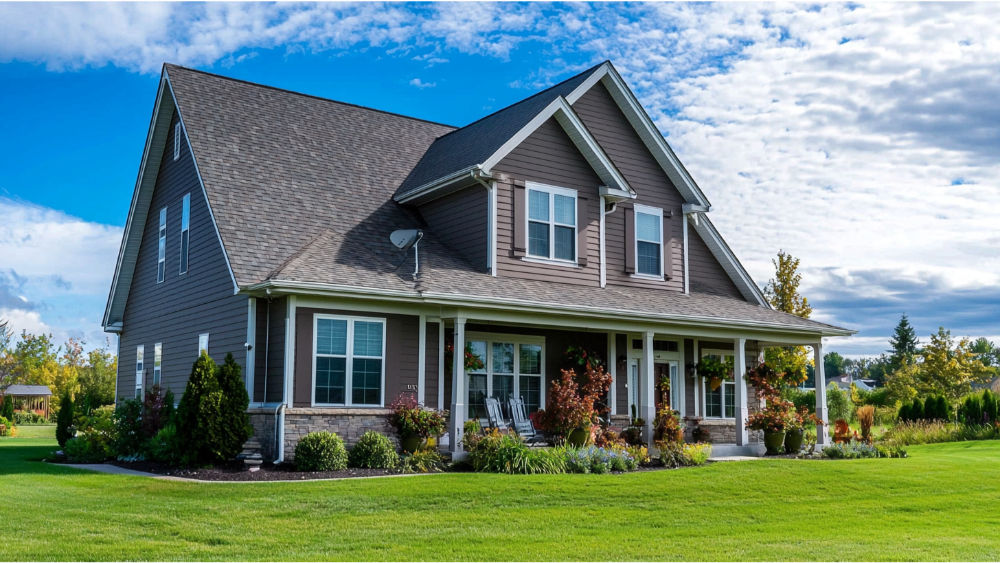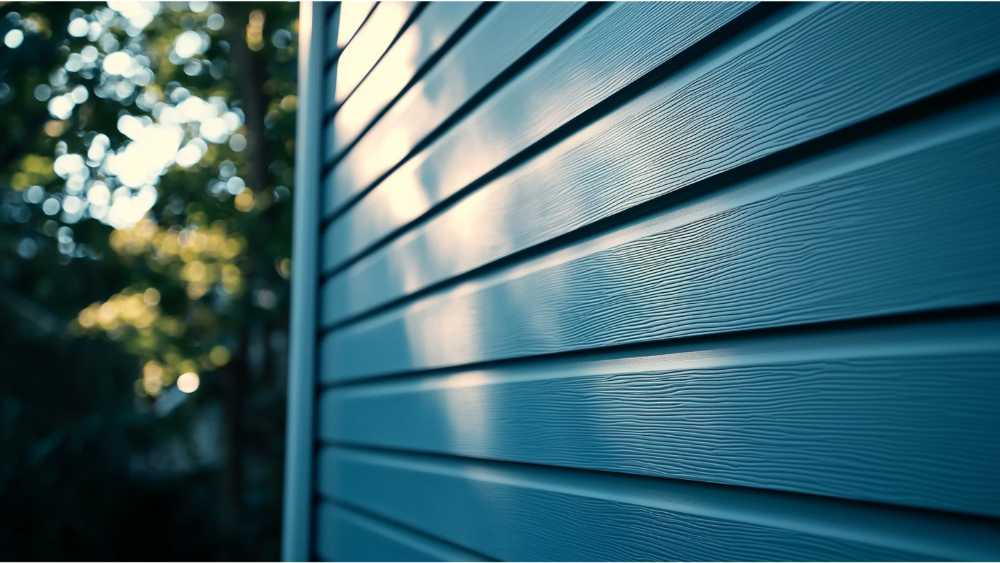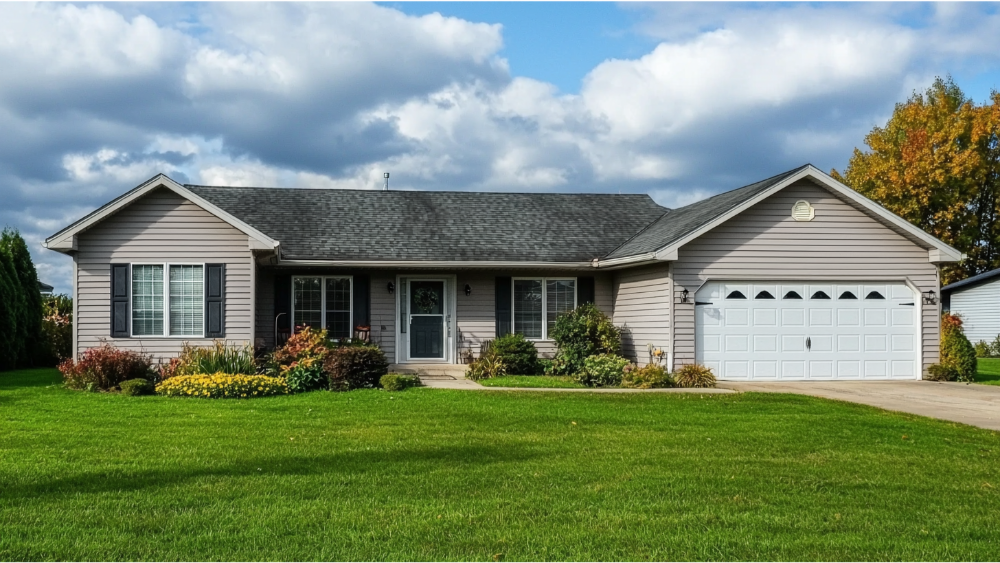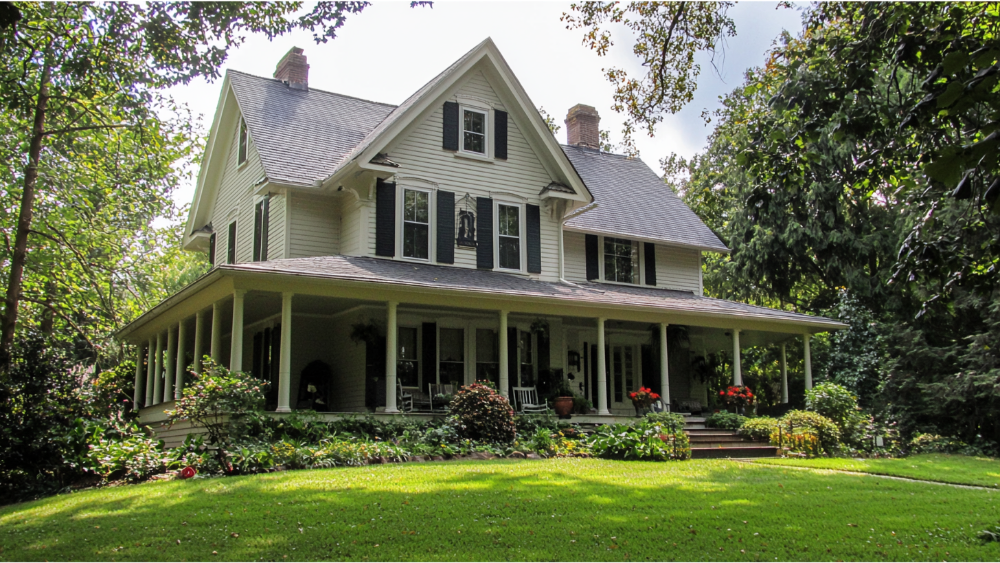Do New Windows Increase ...
- Mon to Fri: 09:00 am to 07:00 pm

Vinyl siding is a popular option for exterior home siding due to its durability, low maintenance requirements, and variety of styles and colors. It is made from a plastic material called PVC (polyvinyl chloride) and has been used in homes since the 1950s.
One common question that homeowners may have when considering vinyl siding for their homes is: How long will it last? In this article, we will explore the factors that can affect the lifespan of vinyl siding and provide some tips on how to extend its longevity.
On average, vinyl siding can last between 20 to 40 years, depending on various factors such as the quality of the material, environmental conditions, and proper installation. Higher-quality vinyl siding, often thicker and more resistant to wear, tends to have a longer lifespan. Additionally, homes in regions with mild climates are less likely to experience significant wear and tear on their siding compared to those in areas with extreme weather conditions, like intense sun, heavy winds, or frequent storms. With adequate maintenance, such as cleaning and inspecting the siding regularly for damage, homeowners can ensure their vinyl siding remains in good condition for decades.

Several factors can impact how long vinyl siding will last on your home:
The quality of the materials used to make the vinyl siding can greatly affect its lifespan. Low-quality vinyl siding may have a shorter lifespan and be more prone to cracking, fading, or warping over time. It is important to choose a reputable brand and ensure that the siding meets industry standards for thickness and color-fastness. Additionally, some homeowners may consider alternative materials such as fiber cement siding, which is known for its exceptional durability and resistance to harsh weather conditions. While fiber cement siding often requires more maintenance than vinyl, it can be a worthwhile option for those seeking a longer-lasting, high-performance exterior.
Even with high-quality vinyl siding, improper installation can significantly reduce its lifespan. Issues like buckling, water damage, or gaps between panels that let moisture seep in are common with poor installation. Adding foam insulation behind the siding can further enhance durability and energy efficiency, but it’s crucial to ensure both the siding and insulation are installed correctly. Hiring a professional contractor with experience in vinyl siding and foam insulation is essential to avoid these problems.
The climate and weather in your area can also play a significant role in the lifespan of vinyl siding. Extreme temperatures, humidity, and exposure to harsh elements such as strong winds or heavy rain can cause wear and tear on the siding over time. Compared to other materials like wood siding, vinyl siding generally holds up better against moisture and insect damage; however, wood siding, while offering a more traditional and natural aesthetic, may require additional maintenance such as regular sealing or painting to withstand similar environmental challenges.
Vinyl siding is known for its low maintenance requirements, but neglecting proper care can still impact its longevity. Regular cleaning with mild soap and water, avoiding abrasive cleaners or tools, and promptly addressing any damage or issues can help keep your vinyl siding looking like new for longer.
While there is no exact answer to how long vinyl siding will last, there are steps you can take to extend its lifespan:

Aside from vinyl siding, other siding materials offer varying lifespans:
As mentioned earlier, fiber cement siding is known for its exceptional durability and flexible material. It can last up to 50 years with proper maintenance. However, it can be more expensive than vinyl siding.
Wood siding can last 20-40 years, depending on the type of wood and maintenance efforts. While it offers a natural and traditional look, it may require more frequent upkeep such as staining or painting.
Aluminum siding is not as popular as it used to be but can still be found on some homes. It has a lifespan of around 20-30 years but can be prone to denting and fading over time.
Proper installation and maintenance can last up to 100 years of brick or stone veneer siding. However, it is typically more expensive than other options and may not be suitable for all climates.
Steel siding has a similar lifespan to brick or stone veneer, lasting up to 100 years. It is also highly durable and resistant to damage from weather or insects. However, it can be more expensive than other types of siding.
At Pro Superior Construction, we pride ourselves on being experts in vinyl siding. Whether you’re considering installing vinyl siding for the first time, need a professional inspection, or require repairs, our team is here to help. We use only high-quality materials from trusted brands to ensure your siding stands the test of time. Our professional installers are highly skilled and committed to providing flawless workmanship, so you can trust that your home will be protected and looking its best.
We also offer maintenance to help you keep your vinyl siding in top shape. If any damage occurs, our team can quickly assess and resolve the issue to prevent further complications. With Pro Superior Construction, you can feel confident that your vinyl siding needs are met with quality, care, and attention to detail. Contact us today to learn more about our services and get started on your vinyl siding project!

Yes, vinyl siding can be painted, but it is not recommended. Paint may not adhere well to the PVC material and can lead to uneven or peeling surfaces. If you choose to paint your siding, ensure you use paint specifically designed for vinyl and follow manufacturer guidelines. Keep in mind that painting vinyl siding may void its warranty.
The installation time can vary depending on the size of your home and any additional preparation work needed, like if you’re replacing vinyl siding or other construction materials. On average, a professional installation can take 1-2 weeks. Factors such as weather conditions, the complexity of the project, and existing siding removal may also impact the timeline.
Standard vinyl siding by itself does not provide significant insulation. However, insulated vinyl siding options are available, which include a foam backing that improves the overall energy efficiency of your home. This can help reduce heating and cooling costs while increasing comfort.
Vinyl siding is designed to withstand a variety of weather conditions. High-quality vinyl siding is resistant to UV rays, moisture, and moderate wind speeds. However, in extreme conditions such as severe storms, high winds, or hail, it may sustain damage. Regular inspections can identify and address any issues caused by adverse weather.
Yes, damaged vinyl siding can often be repaired by replacing the affected panels. This process is typically straightforward, but it is best done by a professional to ensure a seamless look and proper protection. Promptly addressing damage can prevent more extensive problems, such as water infiltration.
The cost of vinyl siding installation varies depending on factors such as the size of your home, the type of vinyl siding you choose, and local labor rates. On average, the cost can range from $5,000 to $15,000. While this may seem like a significant investment, it is often more affordable than other siding options, and its durability and low maintenance make it cost-effective in the long run.
Vinyl siding is a durable, low maintenance, and cost-effective option for protecting your home. With proper care and regular maintenance, it can last for many years while still looking great. Choosing high-quality materials, hiring a professional contractor, and addressing any issues promptly are essential steps to extend its lifespan.
At Pro Superior Construction, we are experts in vinyl siding and offer a range of services to help you keep your home in top shape. Contact us today to learn more or get started on your vinyl siding project!
Overall, by investing in quality products and proper care, you can enjoy the benefits of vinyl siding for many years to come. So why wait? Upgrade your home’s exterior with vinyl siding today and experience its long-lasting protection and beauty.